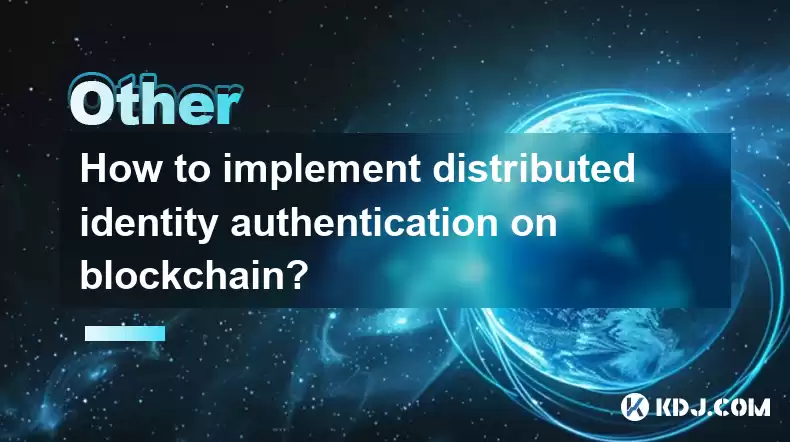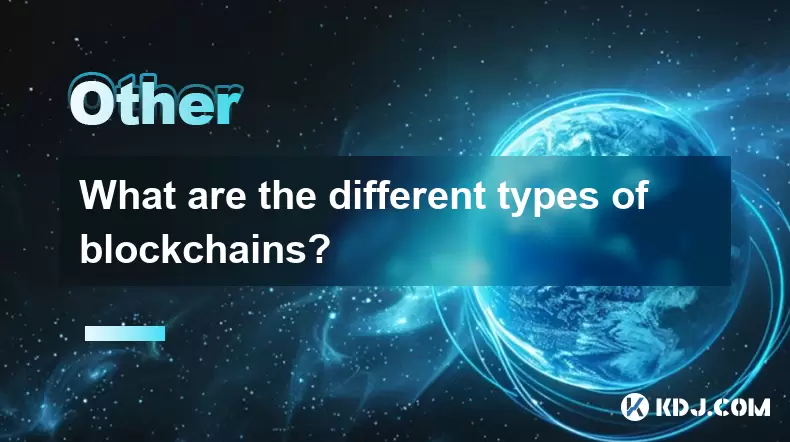-
 Bitcoin
Bitcoin $112400
-1.07% -
 Ethereum
Ethereum $3409
-3.27% -
 XRP
XRP $2.784
-6.60% -
 Tether USDt
Tether USDt $0.9997
-0.03% -
 BNB
BNB $739.3
-2.09% -
 Solana
Solana $158.0
-2.90% -
 USDC
USDC $0.9998
-0.02% -
 TRON
TRON $0.3213
-0.94% -
 Dogecoin
Dogecoin $0.1929
-5.01% -
 Cardano
Cardano $0.6974
-2.82% -
 Hyperliquid
Hyperliquid $36.69
-2.31% -
 Sui
Sui $3.327
-4.80% -
 Stellar
Stellar $0.3672
-5.18% -
 Chainlink
Chainlink $15.65
-3.07% -
 Bitcoin Cash
Bitcoin Cash $525.0
-1.68% -
 Hedera
Hedera $0.2291
-6.00% -
 Avalanche
Avalanche $20.91
-2.96% -
 Ethena USDe
Ethena USDe $1.000
0.00% -
 Toncoin
Toncoin $3.520
-1.12% -
 UNUS SED LEO
UNUS SED LEO $8.968
0.14% -
 Litecoin
Litecoin $105.7
0.26% -
 Shiba Inu
Shiba Inu $0.00001181
-1.79% -
 Polkadot
Polkadot $3.492
-2.08% -
 Uniswap
Uniswap $8.800
-3.10% -
 Dai
Dai $0.9999
-0.01% -
 Monero
Monero $289.9
-3.17% -
 Bitget Token
Bitget Token $4.243
-1.27% -
 Pepe
Pepe $0.00001006
-3.67% -
 Cronos
Cronos $0.1248
-5.68% -
 Aave
Aave $249.7
-2.50%
How to implement distributed identity authentication on blockchain?
Blockchain-based distributed identity systems use cryptographic keys and smart contracts to enhance privacy and security, reducing risks of data breaches.
Apr 16, 2025 at 12:56 am

Implementing distributed identity authentication on blockchain involves leveraging the decentralized and secure nature of blockchain technology to manage and verify identities. This approach can significantly enhance privacy, security, and control over personal data. Below, we explore the process and key components required to implement such a system.
Understanding Distributed Identity Authentication
Distributed identity authentication on blockchain refers to a system where identity verification is not controlled by a single entity but is instead managed across a network of nodes. This system utilizes cryptographic keys to ensure that only the owner of an identity can access and control their personal data. The primary advantage of this approach is that it reduces the risk of data breaches and unauthorized access, as there is no central point of failure.
Key Components of Blockchain-Based Identity Authentication
To implement a distributed identity system on blockchain, several key components are essential:
Cryptographic Keys: Each user has a pair of cryptographic keys - a public key, which is shared and used to encrypt messages, and a private key, which is kept secret and used to decrypt messages. These keys are fundamental to proving ownership and authenticity of an identity.
Digital Signatures: Users sign their data with their private key to create a digital signature. This signature can be verified by others using the user's public key, ensuring that the data has not been tampered with and comes from the claimed source.
Smart Contracts: These are self-executing contracts with the terms directly written into code. In the context of identity authentication, smart contracts can automate the verification process and manage access to personal data based on predefined rules.
Decentralized Identifiers (DIDs): DIDs are globally unique identifiers that do not require a centralized registration authority. They allow users to prove control over their identity without revealing personal information.
Steps to Implement Distributed Identity Authentication
Implementing a distributed identity system on blockchain involves several detailed steps:
Choose a Blockchain Platform: Select a blockchain platform that supports smart contracts and has a robust ecosystem for identity management. Ethereum and Hyperledger Fabric are popular choices.
Design the Identity Model: Define what constitutes an identity within your system. This may include attributes such as name, address, and other verifiable credentials.
Create and Manage Cryptographic Keys: Each user must generate their own cryptographic keys. This can be done using a secure key generation tool, which should be integrated into the user interface of your application.
Set Up Smart Contracts: Develop smart contracts that will handle the logic of identity verification and data management. These contracts should be able to issue, revoke, and manage DIDs and associated credentials.
Integrate with Decentralized Identifiers (DIDs): Implement the DID standard to ensure interoperability with other systems. This involves setting up a DID registry on the blockchain where users can register their DIDs.
User Interface and Experience: Develop a user-friendly interface that allows users to manage their identities, including generating keys, registering DIDs, and interacting with smart contracts.
Testing and Deployment: Thoroughly test the system to ensure that it is secure and functions as intended. Once testing is complete, deploy the system on the chosen blockchain platform.
Security Considerations
Security is paramount in a distributed identity system. Consider the following:
Key Management: Ensure that users' private keys are securely stored and managed. Hardware wallets or secure key management systems can be used to protect these keys.
Smart Contract Security: Audit smart contracts for vulnerabilities. Use formal verification methods to ensure that the contracts behave as expected under all conditions.
Data Privacy: Implement zero-knowledge proofs or other privacy-preserving technologies to allow users to prove certain attributes without revealing unnecessary information.
Integration with Existing Systems
Integrating a blockchain-based identity system with existing systems can be challenging but is crucial for widespread adoption. Consider the following approaches:
APIs and Middleware: Develop APIs that allow existing systems to interact with the blockchain-based identity system. Middleware can be used to translate between different data formats and protocols.
Hybrid Models: Implement a hybrid model where some identity data remains centralized while sensitive data is managed on the blockchain. This can ease the transition for organizations already using centralized systems.
Standards Compliance: Ensure that your system complies with relevant standards and regulations, such as GDPR, to facilitate integration with existing legal frameworks.
User Adoption and Education
For a distributed identity system to be successful, user adoption is critical. Educate users on the benefits and functionalities of the system:
Awareness Campaigns: Launch campaigns to raise awareness about the advantages of decentralized identity management, such as enhanced privacy and security.
User Training: Provide training and resources to help users understand how to use the system, including managing their keys and interacting with smart contracts.
Support and Documentation: Offer comprehensive support and documentation to assist users in resolving issues and maximizing the benefits of the system.
Frequently Asked Questions
Q: How does a distributed identity system on blockchain enhance privacy?
A: A distributed identity system on blockchain enhances privacy by allowing users to control their personal data and share only what is necessary for verification. Using cryptographic keys and zero-knowledge proofs, users can prove certain attributes without revealing their entire identity, thus maintaining privacy.
Q: Can a distributed identity system be integrated with existing centralized systems?
A: Yes, integration is possible through the use of APIs, middleware, and hybrid models. These approaches allow existing systems to interact with the blockchain-based identity system while ensuring compliance with relevant standards and regulations.
Q: What are the main challenges in implementing a distributed identity system on blockchain?
A: The main challenges include ensuring the security of cryptographic keys, developing and auditing secure smart contracts, achieving user adoption, and integrating with existing systems. Additionally, regulatory compliance and user education are significant hurdles that need to be addressed.
Q: How can users recover their identity if they lose their private keys?
A: Implementing a recovery mechanism is crucial. This can be done through a social recovery process where trusted contacts can help restore access, or by using a secure backup system that allows users to regain access to their keys without compromising security.
Disclaimer:info@kdj.com
The information provided is not trading advice. kdj.com does not assume any responsibility for any investments made based on the information provided in this article. Cryptocurrencies are highly volatile and it is highly recommended that you invest with caution after thorough research!
If you believe that the content used on this website infringes your copyright, please contact us immediately (info@kdj.com) and we will delete it promptly.
- BlockDAG, SEI, Ethena: Top Crypto Performers Under the Microscope
- 2025-08-03 10:50:16
- Bitcoin Blasts Past $119K: How Institutional Adoption and Macro Shifts Fuel the Fire
- 2025-08-03 10:55:16
- Crypto, Grok, and August: Decoding the Latest Trends and Insights
- 2025-08-03 11:10:16
- Crypto, Phishing, and Your Wallet: A New Yorker's Guide to Staying Safe
- 2025-08-03 10:30:16
- Troller Cat Meme Coin Presale Soars: A New King in the Crypto Jungle?
- 2025-08-03 10:30:16
- Grayscale, Altcoin Trust, and Mid-Cap Mania: What's the Deal?
- 2025-08-03 08:50:16
Related knowledge

What is the difference between on-chain and off-chain transactions?
Aug 02,2025 at 04:22pm
Understanding On-Chain TransactionsOn-chain transactions refer to digital asset transfers that are recorded directly on a blockchain ledger. These tra...

What is the double-spending problem and how does blockchain prevent it?
Aug 02,2025 at 01:07pm
Understanding the Double-Spending ProblemThe double-spending problem is a fundamental challenge in digital currency systems where the same digital tok...

What is the difference between a blockchain and a database?
Aug 01,2025 at 09:36pm
Understanding the Core Structure of a BlockchainA blockchain is a decentralized digital ledger that records data in a series of immutable blocks linke...

How does blockchain handle scalability?
Aug 02,2025 at 02:58pm
Understanding Blockchain Scalability ChallengesBlockchain scalability refers to a network's ability to handle an increasing volume of transactions wit...

What are the different types of blockchains?
Aug 03,2025 at 03:01am
Public Blockchains: Open and Decentralized NetworksPublic blockchains are the most widely recognized type of blockchain, characterized by their open a...

What is a hash in a blockchain?
Aug 02,2025 at 05:28am
Understanding the Concept of Hash in BlockchainA hash in the context of blockchain technology refers to a unique digital fingerprint generated by a cr...

What is the difference between on-chain and off-chain transactions?
Aug 02,2025 at 04:22pm
Understanding On-Chain TransactionsOn-chain transactions refer to digital asset transfers that are recorded directly on a blockchain ledger. These tra...

What is the double-spending problem and how does blockchain prevent it?
Aug 02,2025 at 01:07pm
Understanding the Double-Spending ProblemThe double-spending problem is a fundamental challenge in digital currency systems where the same digital tok...

What is the difference between a blockchain and a database?
Aug 01,2025 at 09:36pm
Understanding the Core Structure of a BlockchainA blockchain is a decentralized digital ledger that records data in a series of immutable blocks linke...

How does blockchain handle scalability?
Aug 02,2025 at 02:58pm
Understanding Blockchain Scalability ChallengesBlockchain scalability refers to a network's ability to handle an increasing volume of transactions wit...

What are the different types of blockchains?
Aug 03,2025 at 03:01am
Public Blockchains: Open and Decentralized NetworksPublic blockchains are the most widely recognized type of blockchain, characterized by their open a...

What is a hash in a blockchain?
Aug 02,2025 at 05:28am
Understanding the Concept of Hash in BlockchainA hash in the context of blockchain technology refers to a unique digital fingerprint generated by a cr...
See all articles

























































































